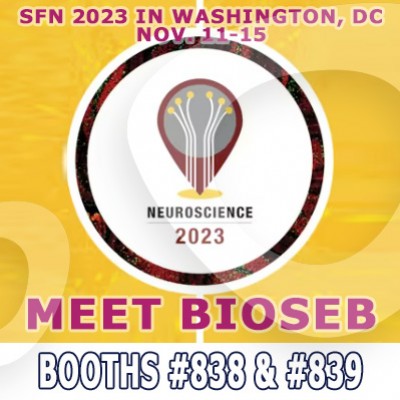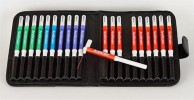Authors
L. Kular, C. Rivat, B. Lelongt, C. Calmel, M. Laurent et al.
Lab
Hôpital Saint-Antoine, Centre de Recherche de Saint-Antoine, Paris, France.
Journal
Journal of Neuroinflammation
Abstract
BACKGROUND: Sustained neuroinflammation strongly contributes to the pathogenesis of pain. The clinical challenge of chronic pain relief led to the identification of molecules such as cytokines, chemokines and more recently matrix metalloproteinases (MMPs) as putative therapeutic targets. Evidence points to a founder member of the matricial CCN family, NOV/CCN3, as a modulator of these inflammatory mediators. We thus investigated the possible involvement of NOV in a preclinical model of persistent inflammatory pain. METHODS: We used the complete Freund's adjuvant (CFA)-induced model of persistent inflammatory pain and cultured primary sensory neurons for in vitro experiments. The mRNA expression of NOV and pro-inflammatory factors were measured with real-time quantitative PCR, CCL2 protein expression was assessed using ELISA, MMP-2 and -9 activities using zymography. The effect of drugs on tactile allodynia was evaluated by the von Frey test. RESULTS: NOV was expressed in neurons of both dorsal root ganglia (DRG) and dorsal horn of the spinal cord (DHSC). After intraplantar CFA injection, NOV levels were transiently and persistently down-regulated in the DRG and DHSC, respectively, occurring at the maintenance phase of pain (15 days). NOV-reduced expression was restored after treatment of CFA rats with dexamethasone. In vitro, results based on cultured DRG neurons showed that siRNA-mediated inhibition of NOV enhanced IL-1_- and TNF-_-induced MMP-2, MMP-9 and CCL2 expression whereas NOV addition inhibited TNF-_-induced MMP-9 expression through _1 integrin engagement. In vivo, the intrathecal delivery of MMP-9 inhibitor attenuated mechanical allodynia of CFA rats. Importantly, intrathecal administration of NOV siRNA specifically led to an up-regulation of MMP-9 in the DRG and MMP-2 in the DHSC concomitant with increased mechanical allodynia. Finally, NOV intrathecal treatment specifically abolished the induction of MMP-9 in the DRG and, MMP-9 and MMP-2 in the DHSC of CFA rats. This inhibitory effect on MMP is associated with reduced mechanical allodynia. CONCLUSIONS: This study identifies NOV as a new actor against inflammatory pain through regulation of MMPs thus uncovering NOV as an attractive candidate for therapeutic improvement in pain relief.
BIOSEB Instruments Used:
Von Frey Filaments (Bio-VF-M)

 Pain - Thermal Allodynia / Hyperalgesia
Pain - Thermal Allodynia / Hyperalgesia Pain - Spontaneous Pain - Postural Deficit
Pain - Spontaneous Pain - Postural Deficit Pain - Mechanical Allodynia / Hyperalgesia
Pain - Mechanical Allodynia / Hyperalgesia Learning/Memory - Attention - Addiction
Learning/Memory - Attention - Addiction Physiology & Respiratory Research
Physiology & Respiratory Research
 Pain
Pain Metabolism
Metabolism Motor control
Motor control Neurodegeneration
Neurodegeneration Cross-disciplinary subjects
Cross-disciplinary subjects Muscular system
Muscular system General activity
General activity Mood Disorders
Mood Disorders Other disorders
Other disorders Joints
Joints Central Nervous System (CNS)
Central Nervous System (CNS) Sensory system
Sensory system
